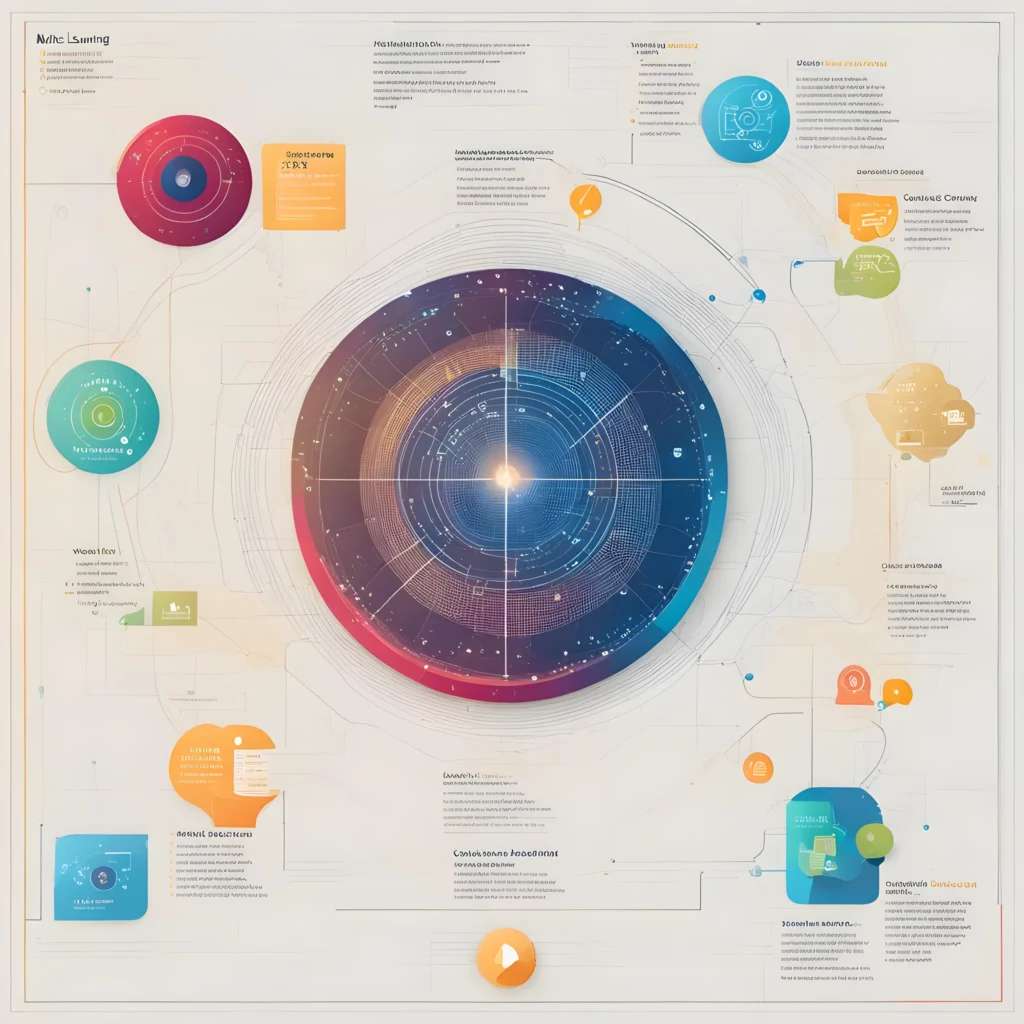
Welcome to the captivating world of Machine Learning Algorithms, where the fusion of data and intelligence creates marvels. In this extensive exploration, we will unravel the intricacies of Machine Learning Algorithms, rendering them accessible and comprehensible for all. From fundamental concepts to advanced insights, we’ve got it all covered. So let’s proceed on this enlightening voyage together.
Table of Contents

Understanding Machine Learning Algorithms
What Exactly is Machine Learning?
A type of artificial intelligence known as “machine learning,” or ML for short, allows computers to learn from data. In contrast to traditional programming, where explicit instructions are provided, ML algorithms enable systems to enhance their performance through experience and exposure to data.
Predictive analytics, recommendation systems, natural language processing, and other uses all fall under the umbrella of machine learning. Self-driving vehicles, voice assistants, and fraud detection systems are all powered by technology.
Machine Learning in Everyday Life
Machine Learning algorithms wield a more profound influence on our daily lives than we might realize. For instance, as you scroll through your social media feed, the content presented is tailored to your preferences, courtesy of ML. Similarly, email filters, online shopping recommendations, and even medical diagnoses often rely on ML to provide personalized experiences and precise outcomes.
Types of Machine Learning Algorithms
Supervised Learning
Supervised Learning can be likened to teaching a computer using labeled examples. It involves a clear input-output relationship, wherein the algorithm learns to make predictions or decisions based on training data. Common algorithms encompass Linear Regression and Decision Trees.
Unsupervised Learning
Conversely, Unsupervised Learning deals with unlabeled data. Its objective is to unearth concealed patterns or structures within the data. Clustering and dimension Reduction stand out as typical tasks in this category.
Reinforcement Learning
Reinforcement Learning entails training algorithms to make sequences of decisions with the aim of maximizing a reward. This technique finds extensive use in gaming, robotics, and autonomous systems.
Deep Learning
Deep Learning, a subset of ML, harnesses neural networks with multiple layers (referred to as deep neural networks). It is excellent at jobs like voice and picture recognition. Convolutional neural networks and recurrent neural networks are two prominent examples.
Key Machine Learning Algorithms Demystified
Decision Trees: Navigating Decisions
Decision Trees serve as intuitive and potent tools in ML. By breaking down an issue into a series of yes-or-no questions, they mimic the way humans make decisions by arriving at a final judgment. They find widespread use in classification and regression tasks.
Significance of Decision Trees
Decision Trees offer interpretability, rendering them ideal for elucidating model decisions. They hold critical relevance in domains like finance for credit risk assessment and healthcare for disease diagnosis.
Random Forest: The Power of Collective Wisdom
Random Forest represents an ensemble learning approach that amalgamates multiple Decision Trees to heighten predictive accuracy while mitigating overfitting. It boasts robustness, versatility, and remarkable effectiveness across diverse domains.
Support Vector Machines: Maximizing Margin
Support Vector Machines aim to identify the optimal hyperplane that effectively segregates data points belonging to different classes. They enjoy extensive application in classification tasks, particularly in high-dimensional spaces.
K-Means Clustering: Grouping by Resemblance
K-Means Clustering is an unsupervised algorithm employed for grouping data into clusters based on similarities. It frequently finds application in customer segmentation, image compression, and anomaly detection.
Neural Networks: Emulating the Human Brain
Neural Networks, inspired by the human brain, consist of interconnected nodes that process and transform data. They excel in intricate tasks like image recognition and natural language processing.
Exploring Machine Learning Algorithms Further
Naive Bayes Classifier: Unveiling Probabilities
The Naive Bayes Classifier is a probabilistic algorithm frequently employed for tasks such as text classification, spam detection, and sentiment analysis.Based on the qualities of a data point, it determines the likelihood that it belongs to a certain class.
Simplicity in Naive Bayes
Despite its “naive” assumption of feature independence, Naive Bayes often delivers commendable performance in real-world scenarios. It boasts computational efficiency and doesn’t necessitate copious amounts of training data.
Gradient Boosting: Elevating Performance
Gradient Boosting represents an ensemble method that amalgamates weak learners, typically Decision Trees, to forge a robust learner. It iteratively rectifies errors committed by preceding models, yielding exceedingly accurate predictions.
Triumphing in Kaggle Competitions with XGBoost
XGBoost, a prominent implementation of Gradient Boosting, has dominated machine learning competitions on platforms such as Kaggle. Its adeptness at handling missing data and incorporating regularization techniques makes it a top choice among data scientists.
Principal Component Analysis (PCA): The Magic of Dimensionality Reduction
PCA, a dimensionality reduction technique, serves to transmute high-dimensional data into a lower-dimensional representation. This simplifies complex datasets while preserving vital information.
Visualization Through PCA
PCA proves valuable not only in reducing computational burden but also in visualizing data in two or three dimensions. It facilitates the discernment of patterns and relationships in data that may remain concealed in its original form.
The Future of Machine Learning

Explainable AI (XAI): Bridging the Divide
As Machine Learning advances further, the need for transparency and interpretability assumes greater significance. Explainable AI (XAI) concentrates on rendering machine learning models comprehensible and interpretable, particularly in domains like healthcare and finance.
Quantum Machine Learning: The Upcoming Frontier
Quantum Computing holds the potential to revolutionize Machine Learning by swiftly resolving intricate problems, surpassing the capabilities of classical computers. Quantum Machine Learning explores the harnessing of this potential to address previously insurmountable challenges.
Conclusion
In this journey through the realm of Machine Learning Algorithms, we have demystified fundamental concepts and delved into pivotal algorithms shaping our digital landscape. From Decision Trees to Neural Networks, these algorithms form the bedrock of AI-driven solutions that continue to revolutionize industries and enrich our lives.
Keep in mind that exploration and ongoing learning are the cornerstones of understanding this always-changing area as you explore deeper into the world of machine learning. You’ll be well on your way to becoming a Machine Learning aficionado if you embrace the synergy between data and algorithms.
In this extended exploration of Machine Learning Algorithms, we have delved further into essential algorithms and contemplated the future of this enthralling field. From Naive Bayes to Quantum Machine Learning, the horizons are limitless, and the potential for innovation knows no bounds.
Remember this as you read this article’s conclusion: machine learning is more than simply a technology; it’s a journey of exploration and creativity. Whether you’re a neophyte or a seasoned expert, the world of ML offers continuous learning prospects and the opportunity to shape the future.
FAQs
What are the prerequisites for understanding Machine Learning?
To grasp Machine Learning concepts, a solid foundation in mathematics, statistics, and programming (with Python being the preferred choice) proves advantageous. However, beginners can initiate their journey through online courses and tutorials to cultivate their knowledge.
Can machine-learning algorithms replace human decision-making entirely?
While Machine Learning algorithms can automate and optimize decision-making processes, they may not entirely supplant human judgment, especially in contexts where human values and context are paramount.
How do I choose the right machine learning algorithms for my project?
The selection of an appropriate algorithm hinges on the specific problem and dataset at hand. Understanding your data and determining the sort of job (such as classification, regression, or clustering) are the first steps in the process. Next, systematically explore several algorithms and determine which ones are best for your dataset.
Is Machine Learning the same as Artificial Intelligence?
No, Machine Learning represents a subset of Artificial Intelligence. Artificial Intelligence encompasses a broader spectrum of technologies and concepts, while Machine Learning concentrates on training algorithms to glean insights from data.
Are Machine Learning algorithms prone to bias?
Machine Learning algorithms can inherit biases from the data on which they are trained. It’s imperative to preprocess and scrutinize the data to mitigate biases and ensure equitable and ethical outcomes.
What are the future prospects for Machine Learning?
The future of Machine Learning is promising, with applications extending across diverse industries.It will be crucial in fields like healthcare, driverless cars, finance, and others, spurring innovation and boosting productivity.
How can I stay updated on the latest developments in Machine Learning?
Reputable blogs, academic papers, and online courses should be followed if you want to stay current with the rapidly developing subject of machine learning. Active participation in Machine Learning communities, forums, and conferences can also enrich your understanding.
What ethical concerns are associated with Machine Learning?
Ethical concerns are prevalent in Machine Learning, especially with regard to issues of bias, fairness, and data privacy. It is imperative to address these concerns and prioritize responsible AI development.
Can I pursue a career in Machine Learning without a formal education in computer science?
Indeed, you can. Many successful Machine Learning professionals come from diverse educational backgrounds. A fulfilling job in machine learning may be attained through self-directed learning, online courses, and practical experience.
What are some practical applications of Machine Learning in business?
Machine Learning is extensively employed in business for tasks such as demand forecasting, customer segmentation, fraud detection, and personalized marketing, among others.
How would you explain Machine Learning to someone unfamiliar with the concept?
The science of training computers to learn from data and make predictions, identify patterns, and make judgments without explicit programming is known as machine learning.
What challenges exist in implementing Machine Learning in healthcare?
Implementing Machine Learning in healthcare presents challenges related to data privacy, data quality, adherence to regulatory compliance, and ensuring that AI systems align with ethical medical practices.
You may also like: What is the difference between ML and AI?



